Potřebujeme váš souhlas k využití jednotlivých dat, aby se vám mimo jiné mohly ukazovat informace týkající se vašich zájmů. Souhlas udělíte kliknutím na tlačítko „OK“.
ASTM E2617-10
Standard Practice for Validation of Empirically Derived Multivariate Calibrations
Automaticky přeložený název:
Standardní praktiky pro validaci empiricky odvozených multivariační Kalibrace
NORMA vydána dne 1.3.2010
Informace o normě:
Označení normy: ASTM E2617-10
Poznámka: NEPLATNÁ
Datum vydání normy: 1.3.2010
Kód zboží: NS-45739
Počet stran: 11
Přibližná hmotnost: 33 g (0.07 liber)
Země: Americká technická norma
Kategorie: Technické normy ASTM
Kategorie - podobné normy:
Anotace textu normy ASTM E2617-10 :
Keywords:
calibrations, empirically derived multivariate calibrations, validation, Calibration, MLR (multilinear regression), Multivariate analyses, PCR (principal components regression), PLS (partial least squares) regression, Validation, ICS Number Code 17.020 (Metrology and measurement in general)
Doplňující informace
| Significance and Use | ||||||
|
This practice outlines a universally applicable procedure to validate the performance of a quantitative or qualitative, empirically derived, multivariate calibration relative to an accepted reference method. This practice provides procedures for evaluating the capability of a calibration to provide reliable estimations relative to an accepted reference method. This practice provides purchasers of a measurement system that incorporates an empirically derived multivariate calibration with options for specifying validation requirements to ensure that the system is capable of providing estimations with an appropriate degree of agreement with an accepted reference method. This practice provides the user of a measurement system that incorporates an empirically derived multivariate calibration with procedures capable of providing information that may be useful for ongoing quality assurance of the performance of the measurement system. Validation information obtained in the application of this practice is applicable only to the material type and property range of the materials used to perform the validation and only for the individual measurement system on which the practice is completely applied. It is the user's responsibility to select the property levels and the compositional characteristics of the validation samples such that they are suitable to the application. This practice allows the user to write a comprehensive validation statement for the analyzer system including specific limits for the validated range of application and specific restrictions to the permitted uses of the measurement system. Users are cautioned against extrapolation of validation results beyond the material type(s) and property range(s) used to obtain these results. Users are cautioned that a validated empirically derived multivariate calibration is applicable only to samples that fall within the subset population represented in the validation set. The estimation from an empirically derived multivariate calibration can only be validated when the applicability of the calibration is explicitly established for the particular measurement for which the estimation is produced. Applicability cannot be assumed. |
||||||
| 1. Scope | ||||||
|
1.1 This practice covers requirements for the validation of empirically derived calibrations (Note 1) such as calibrations derived by Multiple Linear Regression (MLR), Principal Component Regression (PCR), Partial Least Squares (PLS), Artificial Neural Networks (ANN), or any other empirical calibration technique whereby a relationship is postulated between a set of variables measured for a given sample under test and one or more physical, chemical, quality, or membership properties applicable to that sample. Note 1—Empirically derived calibrations are sometimes referred to as “models” or “calibrations.” In the following text, for conciseness, the term “calibration” may be used instead of the full name of the procedure. 1.2 This practice does not cover procedures for establishing said postulated relationship. 1.3 This practice serves as an overview of techniques used to verify the applicability of an empirically derived multivariate calibration to the measurement of a sample under test and to verify equivalence between the properties calculated from the empirically derived multivariate calibration and the results of an accepted reference method of measurement to within control limits established for the prespecified statistical confidence level. 1.4 This standard does not purport to address all of the safety concerns, if any, associated with its use. It is the responsibility of the user of this standard to establish appropriate safety and health practices and determine the applicability of regulatory limitations prior to use. |
||||||
| 2. Referenced Documents | ||||||
|
Podobné normy:
Historická
1.5.2010
Historická
1.4.2012
Historická
28.3.2013
Historická
28.3.2013
Historická
1.8.2013
Historická
1.10.2008


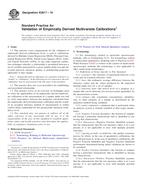
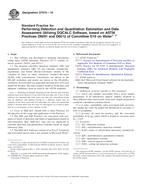 ASTM D7510-10
ASTM D7510-10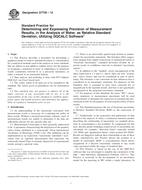 ASTM D7729-12
ASTM D7729-12 ASTM D7782-13
ASTM D7782-13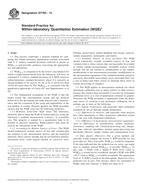 ASTM D7783-13
ASTM D7783-13 ASTM E2254-13
ASTM E2254-13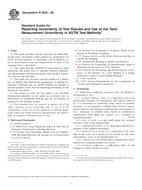 ASTM E2655-08
ASTM E2655-08
 Cookies
Cookies
